Author: Morris M.
He’s perhaps the greatest ever humanitarian. Oskar Schindler was a German industrialist who saved the lives of over 1,000 Jews during the Holocaust. The subject of a hit 1982 book and a 1993 Steven Spielberg film that hit even bigger, Oskar Schindler today is a household name. You probably think you already know him. How he started out as a cynical businessman before finding redemption. How he courted the Nazi leadership to save Jewish lives. Even how his humanity was finally stirred by the sight of one red-coated girl dying in the Krakow ghetto.
But what if we told you there was far more to Oskar Schindler than you thought? What if we told you he wasn’t just a cynical businessman, but a war profiteer, a Nazi spy, and a traitor who was nearly executed for collaborating? In the video today, we’re going to take you inside the life of Oskar Schindler, and explore how a one-time Nazi stooge succeeded in finding his humanity… and, in doing so, saved the world.
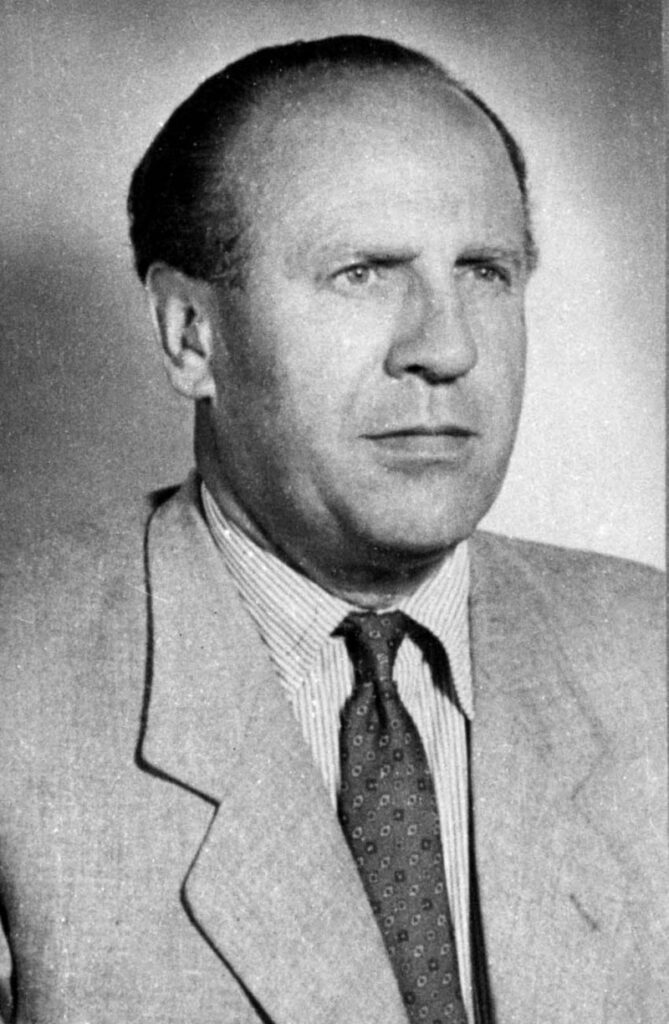
Brave New World
The story of Oskar Schindler technically begins on April 28, 1908, when he was born in the pretty town of Zwittau.
We say “technically”, because there’s really not much to say about those early days. Schindler was born into a middle-class German family, had a younger sister, and went to school.
Exciting stuff, huh?
From a purely narrative point of view, the story of Oskar Schindler can actually be said to start nearly 11 years later, on October 29, 1918.
That’s the date the Schindler family’s comfortable, middle-class world exploded.
See, the Schindlers were ethnic Germans, but they didn’t live in Germany. They lived in the Austro-Hungarian Empire, specifically a region known as the Sudetenland.
Above them lay Germany proper. Somewhere below them lay Austria itself.
But between the Schindlers and Austria lay a land that was very un-German. A land that had spent centuries chafing under Austrian rule until it was completely sick of Germans.
That land was about to declare itself the brand new country of Czechoslovakia.
On that day, October 29, 1918, just as WWI was drawing to an end, the Czechs and Slovaks deposed the Austrians and announced a new, Slavic republic.
Like all Sudeten Germans, the Schindlers took one look at the emerging Czechoslovak state and said, “Yeah, we’d rather be with Germany.”
To which the Czechs replied… Well, they didn’t actually say anything. They just picked up their guns and started shooting.
The pro-German riots that broke out across the Sudetenland only ended when Czech authorities in Kadaň emptied a machinegun into a crowd, killing 25.
In the context of the time, the Kadaň Massacre wasn’t particularly egregious. Along the ethnic fault lines of the old Austro-Hungarian Empire, Poles were killing Czechs, who were killing Germans, who were killing Poles, and so on.
But it did provide a shock to any Sudeten Germans tempted to buy into this Czechoslovakia thing. Like all their neighbors, the Schindlers would remember Kadaň.
That September, the Treaty of Saint-Germaine made the Czech takeover official.
While this was sucky news for the Sudeten Germans, we need to be clear that this wasn’t the apocalypse.
As part of Czechoslovakia, Sudeten Germans were allowed to continue speaking German. They could attend German-language schools, keep their businesses, and so on.
An evil occupying force the Czechoslovaks were not.
But they were resented.
The new Czechoslovakia was 50% Czech, nearly 23% German, and 16% Slovak, plus a handful of Jews, Ukrainians, and Hungarians.
But while the Slovaks got their own federal parliament, the most numerous Sudeten Germans were stuck as bit players in the Czech system.
It wasn’t terrible, in other words. Some families, such as the Schindlers, even thrived under the new regime.
But it was a cause of discontent.
You can imagine it as the world’s slowest timebomb. By ignoring the Sudeten Germans’ wishes, the Czechs had just accidentally pressed the ‘on’ button.
That Sudeten timebomb might not explode for decades. But, when it did, it was going to blow the whole of Europe to pieces.
Marriage and Misery
Right, so that’s the world Oskar Schindler inhabited. Now, what about the man himself?
Well… that’s the problem. Schindler wasn’t exactly a man yet, so much as a boy. A boy who enjoyed nothing more than goofing off and chasing pretty girls.
And it was going to be a long time before that boy grew up.
In 1924, Schindler was dismissed from school for falsifying his report card. Rather than try to continue his education, he instead moved into a series of odd jobs around Zwittau.
The actual content of those jobs doesn’t matter. They were really just a front for the tall and charming Schindler to prowl around, seducing as many girls as he could.
Before he was even 20, Schindler had a reputation as a guy who loved ladies, loved cars, and hated personal responsibility.
Still, even the biggest Casanova will eventually settle down, and for Schindler that settling came in 1928.
In late January that year, Schindler traveled to Alt Moletein for his work as a salesman. While at the house of a client, he happened to bump into their daughter.
From the moment he met Emilie Pelzl, Schindler was knocked for six.
That’s a cricket metaphor; I guess all you Americans out there would say “knocked for a homerun” or something equally ludicrous.
For her part, Emilie was knocked for a winning basket, too. The pair began an intense courtship that climaxed with them marrying just six weeks later, on March 6, 1928.
As a gift for the married couple, Emilie’s father gave them 100,000 Czech crowns, perhaps hoping they’d buy a little house or something.
Instead, Schindler blew it all on a luxury car and the couple moved in above Schindler’s parents.
For Emilie, the experience was a rude awakening. Although he claimed to genuinely love her, Schindler treated his new wifeless like a lifelong companion, and more like someone to come home to when he couldn’t find a better offer.
It was probably a relief when Schindler was conscripted into the Czechoslovak army for 18 months service.
Speaking of Czechoslovakia, things seemed to be going kind of OK in 1928.
The country had existed for ten years now, and the Sudeten Germans’ initial resistance had settled down into a kind of grumbling, probably helped by the fact the Czechoslovak economy was booming while Germany was a Weimar basket case.
But those resentments were still there. And it would only take one sharp outside shock to crack them wide open.
That shock came on October 29, 1929.
That day, the Wall Street stock market came crashing down under the weight of a billion broken dreams. The global economy ground to a halt. Hunger, misery, and fear bit.
For Oskar Schindler, this meant being discharged from the army just in time to see his old company file for bankruptcy. Used to a lavish lifestyle, Schindler first tried moving to Berlin, then opening a poultry farm, but nothing worked.
Finally, he took over his father’s business in Zwittau, only to watch as it, too, went bankrupt.
It was a grim and desperate time. For the Schindlers, for most of the world.
But not everyone.
Across the Czechoslovak border, a funny little man with a Charlie Chaplin mustache was about to find the Great Depression had created a willing audience for his message of white nationalism and anti-elitism.
His name was Adolf Hitler. And he was about to force every Sudeten German to make a terrible choice.
The Dictator and the Spy
The suddenness of Hitler’s rise to power is the sort of career the word “meteoric” is reserved for.
In the 1928 German election, the Nazis won a paltry 2.5% of all votes, the sort of number even the US Libertarian Party would laugh at.
By the July 1932 election, though, they were the biggest party with nearly 40% of the vote. Less than a year later, they would seize power.
Back in the Sudetenland, unemployed and impoverished Germans watched the rise of the Nazis with ill-disguised envy.
In 1933, a Sudeten German gymnastics coach named Konrad Henlein decided to try and capture some of that fascist magic by founding his own party, the Sudetendeutsche Heimatfront.
A Nazi organization in all but name, the Heimatfront had one goal. To split the Sudetenland off from Czechoslovakia and unite with Hitler’s Germany.
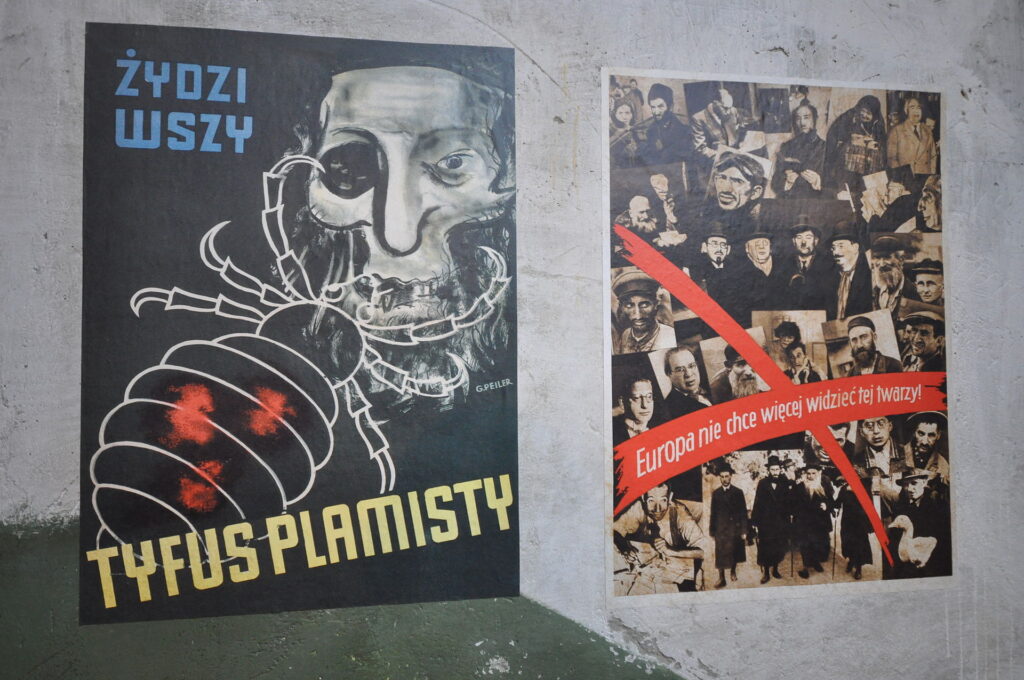
It was a goal most of the Sudeten Germans were more than onboard with.
In May, 1935, the Czechoslovak elections returned 44 seats for Henlein’s wannabee Nazis, a single-seat less than the largest party.
That same year, Oskar Schindler officially joined the Heimatfront.
Many biographies of Schindler go to great lengths to explain that he was a pure opportunist, that he merely joined for the financial opportunities.
Given what we know of his later life and good deeds, it’s tempting to agree. Honestly, we’d love nothing more than to give you an uncomplicated history of a good man.
But there’s no escaping the fact that history is rarely black and white. And had you glanced at Oskar Schindler’s CV in 1936, you’d have had a hard time believing he was anything but a Nazi.
That’s the year Schindler joined the Abwehr, the German intelligence agency.
Under the Abwehr, Schindler turned spy for Nazi Germany. He began collecting information. Before long, he was working on clandestine activities that could have only pointed in one direction.
The Nazis were preparing for an invasion of Czechoslovakia.
Schindler would later say that he only took this work for the money because he was badly in debt and addicted to drink. There’s no doubt this is true.
There’s also no doubt that the work of Schindler and other Sudeten German spies like him helped Hitler get exactly what he wanted.
In February 1938, Hitler felt confident enough to demand self-determination for all Sudeten Germans.
A month later, he annexed Austria.
On April 24, Konrad Henlein – the Nazi gymnast who set up the Heimatfront – demanded full autonomy for the Sudetenland within Czechoslovakia.
The Czechs told him to take a hike, but Henlein was merely playing for time. On the ground, Schindler and his other spies fanned out, working overtime to prepare for the Nazi invasion.
But Oskar Schindler wouldn’t be around to see it.
On July 18, 1938, Czech authorities arrested Schindler as a spy. He was found guilty and sentenced to hang as a traitor.
He was saved, of all people, by Adolf Hitler.
On September 28, Britain, France, Germany, and Italy all met in Munich to hammer out an agreement that would stop the Sudeten Crisis from triggering WWII.
The deal they reached was to just give Hitler everything.
On October 1, the Sudetenland was handed over to Germany.
At the time Schindler was on death row. We’ve seen at least a couple of sources claim he was days or only hours away from being executed when the Nazis marched in.
As part of the Munich Agreement, Schindler was freed. The traitor had escaped death by the skin of his teeth.
One month later, Schindler was a citizen of Germany, living inside the new Sudetenland.
Perhaps to celebrate, he joined the Nazi Party.
Winter for Poland
If you only know Oskar Schindler from Schindler’s List, you might be wondering when his life story is gonna start sounding less like one of our depressing videos about Nazi criminals, and more like one of our uplifting videos about people who, y’know, aren’t Nazi criminals.
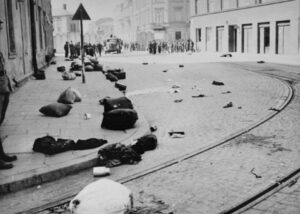
The trouble is, Schindler was a morally complex guy.
And the picture is about to become even murkier.
In November 1938, the Abwehr ordered Schindler and Emilie to Ostrava, a grimy industrial city on the Polish border.
For Schindler, this meant numerous business trips into Poland, gathering intelligence.
Yet it also meant doing things that don’t neatly fit in with the narrative of Schindler the spy.
For instance, it was in Ostrava that Schindler started bribing local Nazi officials, acting less like a true believer than a guy trying to secure favorable treatment.
It was also in Ostrava that Schindler began dabbling in the black market.
Next summer, just a few short months after Hitler invaded Czechoslovakia, Schindler landed a juicy contract to supply stolen Polish army uniforms to a Nazi agent.
Not long after, men dressed as Polish soldiers launched surprise “attacks” on German buildings. In the aftermath, Hitler declared war on Poland.
The invasion of Poland lasted barely a month. On September 1, 1939, the first tanks rolled in. By October 6, the last Polish units had surrendered.
By then, some 60,000 Poles had been killed.
From Oskar Schindler’s perspective, though, the occupation of Poland was simply a whole new market opening up.
Barely had the last fires of resistance been put out than Schindler was on a train to Krakow, eager to help himself to the spoils of war.
In the grand, redbrick city, he took over a vast apartment that had once belonged to a wealthy Jewish family. He moved into the black market, began chasing shady dealings.
Pretty soon, he was making a killing.
While Emilie was laid up back home with a debilitating illness, Schindler began living the high life, wining and dining local Nazi leaders, acting like a total playboy.
It’s here that the movie Schindler’s List opens, with Schindler establishing connections on the Krakow business scene, not giving the smallest damn about the suffering around him.
But if Krakow life was the high watermark for Schindler the uncaring, money-obsessed collaborator, it was also something else.
It was in Krakow that Schindler would finally discover his own humanity.
The Factory
On November 13, 1939, Schindler took over a Krakow enamel factory that had once been owned by Jewish businessmen.
Barely had the doors opened in January 1940, then Schindler had used his new Nazi contacts to land himself a fat contract supplying the army with kitchenware.
He’d also done something very interesting.
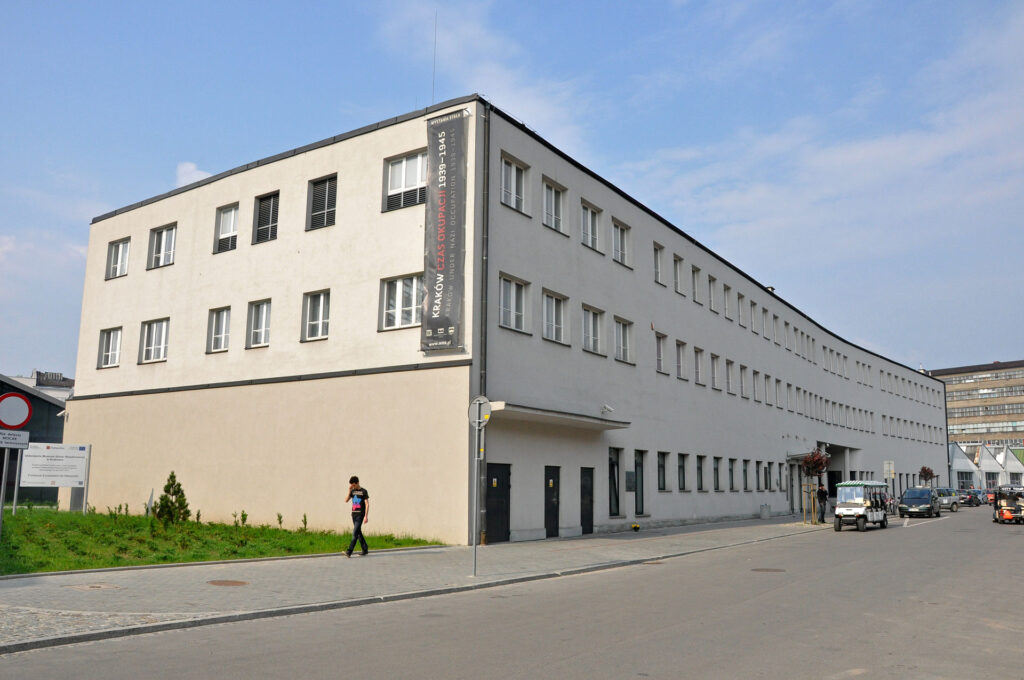
He’d rehired one of the Jews who used to own the factory as his manager, a guy called Abraham Bankier.
Still, Bankier was a rarity in Schindler’s factory at first. By April 1940, Schindler’s staff had grown to several hundred, but only 7 of them were Jewish.
The remaining Jews in Krakow were subject to some strict laws. Among restrictions on their clothing and movements, the Jews also had their wages set by the state, at a pitifully low amount.
As Schindler’s factory business grew, Abraham Bankier came to him with an idea.
Why not hire more Jews? Thanks to the labor laws, it would be much cheaper than hiring Poles, thereby saving Schindler a pile of money.
That word, “money”, was the key. As his eyeballs presumably transformed into gigantic dollar signs, Schindler agreed to expand his Jewish workforce.
It was a decision that would alter the fates of hundreds of people.
By spring, 1941, most of Krakow’s Jews were living in a ghetto while Schindler continued his party lifestyle.
It was against this backdrop that the SS announced Jews could no longer earn wages. Employers such as Schindler would have to pay Jewish wages to the SS instead.
It was a minor legal tweak, just another in a long list of injustice and oppression.
It also changed everything.
Suddenly, the ability of Schindler’s Jewish workers to survive was contingent upon him. He could choose to work them till they dropped then ask the SS for replacements, or he could start feeding them out of his own money.
Not long after, Schindler arranged for his black market contacts to start supplying him extra rations of food.
Come January, 1942, Schindler’s factory had been converted from somewhere producing enamel to somewhere producing armaments for the German war effort.
It’s employees had changed, too.
From a mere seven, Schindler was now employing hundreds of Jews.
He Who Saves One Life…
If the last couple of years had allowed Schindler to be ambivalent about the Nazis, to avoid taking anyone side, 1942 would be the year that everyone had to choose.
On February 15 that year, the first Jews earmarked for extermination arrived in Auschwitz and were immediately gassed.
Barely a month later, on March 17, the Belzec extermination camp opened.
Although Auschwitz was closer, it was to Belzec that the Nazis initially herded Krakow’s Jews.
It wasn’t quite a mass slaughter yet. Those who worked in factories like Schindler’s were saved from deportation.
But things would quickly get much, much worse.
That June, 1942, the Plaszow work camp opened 4km outside Krakow, atop the remains of two Jewish cemeteries.
Many of the Jews in Schindler’s employ were relocated there and forced to march to and from the factory every morning and evening.
It was a grueling existence, and a precarious one. With the SS looking after the camp, any Jew who stepped out of line could be murdered, no matter who they worked for.
For his part, Schindler did what he could to make factory life comfortable for his workers. But he had no control over what happened in Plaszow.
That was about to become a major problem.
As a summer in Hell gave way to a winter of misery, an intellectual young man from a wealthy Austrian publishing family was dispatched to Plaszow to take over the camp.
His name was Amon Göth. Of all the Nazis we’ve encountered in today’s story, he was by far the worst.
Known today for being played by Ralph Fiennes in Schindler’s List, the real Göth was even worse than his fictional counterpart.
As in the film, he used Jews in Plaszow as target practice. He trained his dogs to maul Jews to death on command. He hated the idea that any Jew should have even the faintest taste of freedom.
So what did Oskar Schindler do when faced with this monster?
He set about becoming his very best friend.
Over the next few weeks, Schindler showered Göth in cognac, fine cigars, and cuts of meat only available on the black market.
He took the sadist to parties, charmed him with witty conversation, did everything he could to make sure Göth thought he was a brownnoser of the highest order.
It was only when Göth announced in March that the Krakow ghetto was to be liquidated and all the Jews relocated inside Plaszow that Schindler struck.
As SS soldiers wreaked havoc in the ghetto and the chimneys of Belzec pumped human ash into the sky, Schindler deployed a charm offensive as deadly as any weapon.
He flattered Göth, cajoled him, bribed him, offered to let him in on his black market racket.
Before long, he’d wrung an incredible promise out of this creature in human skin.
Göth had agreed to let Schindler relocate his factory inside Plaszow. What’s more, Schindler would have complete autonomy in the subcamp to do whatever he wanted.
For Schindler, that meant the autonomy to be a decent human being.
The Plaszow Jews who were relocated to Schindler’s subcamp were given adequate food. Their living conditions were humane. They were free from violence.
Schindler even banned the SS from entering. Instead, the Aryan ‘supermen’ were stuck stewing in towers, watching over Schindler’s Jews, but unable to harm them.
It was the sort of thing only a man close to commandant Göth could’ve gotten away with.
It’s here that we get to the greatest paradox of Oskar Schindler.
Had he been a good man from the start, Schindler would’ve never been put in a position where he could save so many lives. The Nazis would have confiscated everything he owned and run him outta town.
But because he started out spying against the Czechs; because he really was a venal, moneygrubbing, amoral, business-obsessed cynic at first… he was able to have the trust of committed Nazis like Göth when he needed it most.
And now, with Plaszow running, and Auschwitz devouring humans and turning the skies over Krakow black with burning flesh, Schindler needed that trust.
…Saves the World
In August, 1944, Amon Göth received a disturbing order.
The Soviet Army was rolling towards Poland and the Reich was in retreat. Plaszow was to be decommissioned immediately and all its inhabitants sent to Auschwitz.
When Oskar Schindler heard the news, he went into panic mode.
Despite what they later said in trials and to themselves as they were trying to get to sleep at night, everyone in Plaszow knew by then what Auschwitz was.
With time running out, Schindler began loudly petitioning to have his factory relocated to Brünnlitz, near his old home.
He was doing essential work, he thundered. The war effort would fail without him. Hadn’t he always been good to Göth?
Finally, Göth agreed to authorize Schindler’s transfer.
But what about my workers? Schindler asked.
Draw up a list, Göth told him. Any you can prove you need I’ll let you take with you.
And so it was that Schindler’s real-life list came to be written.
However! It wouldn’t be Schindler who actually wrote it.
In the movie, Schindler and his accountant sit down to write the list themselves, agonizing over every name.
In reality, Schindler had to give the job to a man called Marcel Goldberg.
Why? Because, in September 1944, Amon Göth was arrested by the SS for bribery and black marketeering. He spilled the beans on his co-criminals and Schindler was arrested too.
That October, while Schindler sat in jail, Marcel Goldberg prepared the list.
Actually, there were up to nine versions, all subtly different, and Goldberg’s involvement was controversial. Some claim he focused on saving the lives of his friends over those of Schindler’s workers.
But others paint a picture of Goldberg as a caring man. One young survivor recalls begging Goldberg to let her and her mother onto the list. Goldberg immediately sat down and added their names.
When the list was finally submitted, the SS demanded to inspect the workers. The men were all processed and sent to Brünnlitz.
The women, however, were accidentally sent to Auschwitz.
From inside his jail, Schindler frantically arranged for a representative to go into the death camp and save those women from extermination.
It was a close-run thing. But it worked. The women were returned alive. Not long after, Schindler’s contacts got him released from jail.
Finally, after two months of panic, Schindler and the workers he’d saved arrived in Brünnlitz.
Between the bribes he paid, the gifts he showered on those in power, and the cost of the move he shouldered, Schindler had by now spent nearly his entire fortune.
When they arrived, he blew the last of it on trucks full of wool, leather, shoes, and clothing materials for his workers.
Schindler and his Jews then settled in to wait out the war-making armaments that were designed to fail, doing their own tiny bit to hinder the Nazi war effort.
Amazingly, no one stopped them. No angry SS officers ever turned up to arrest Schindler.
When the Third Reich finally collapsed on May 8, 1945, Schindler had managed to shield 1,098 Jews from the Holocaust.
Now he just had to survive its aftermath.
How a Hero Dies
On May 9, 1945, Oskar Schindler gathered his employees at his factory for one final goodbye.
He made a short speech, saying how proud he was to have helped saved so many Jewish lives. Then he, Emilie, and a handful of his workers fled the Sudetenland, barely ahead of the advancing Soviet Army.
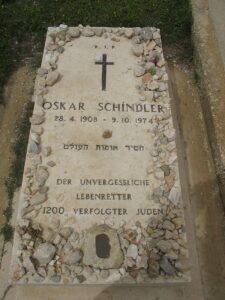
His fortune gone, Schindler would spend the rest of his life in financial misery.
At first, he and Emilie tried settling down in West Germany, before deciding the US might be a better bet.
Unfortunately, his Nazi party membership automatically excluded him from America. So Schindler instead submitted an expenses claim for $1m to the Allies, asking to be paid back the money he spent saving Jews in the war.
After a long deliberation, they sent him $15,000 and told him to be happy. Schindler spent it on a ticket to Argentina.
It could have been the start of a new life. But while actual Nazi war criminals were able to start afresh in Argentina and lead peaceful lives, Schindler seemed destined to failure.
By 1957, he was forced to declare bankruptcy. The next year, he abandoned Emilie and caught a boat back to West Germany.
There, he sank into a mire of poverty.
And that’s really it, unfortunately. Schindler never again enjoyed the high life. Never again got to be the playboy. Never again stood at the center of history.
But he wasn’t totally forgotten.
For the rest of his life, Schindler regularly received donations. Not a huge amount. Just enough to keep him going, keep him safe. Keep him alive.
As you’ve probably guessed, those donations came from the 1,098 Jews he’d saved, a token of their thanks. Known as the Schindlerjuden, they supported him till the very end.
That end came on October 9, 1974.
By then, Schindler had lived long enough to see his name added to the Avenue of the Righteous in Israel by Yad Vashem, a place reserved for those gentiles who risked their lives to save Jews during the Holocaust.
And it was back to Israel that Schindler returned in death. His body was buried in the Catholic Cemetery on Mount Zion.
Today, it’s estimated there are over 8,500 people alive because of Schindler, descendants of the Jews he saved.
But there are better reasons to remember Schindler than just for saving lives.
The famous quote goes that “the only thing necessary for the triumph of evil is for good men to do nothing.” Certainly, plenty of good men alive during the Holocaust were content to not do anything.
But the life of Oskar Schindler shows that sometimes the opposite can happen. Sometimes, a man who appears to be amoral, who appears to just be another uncaring bystander, can shake themselves out of their stupor to do a good deed that will change the world.
The quote everyone remembers from Schindler’s List is the one that goes “he who saves one life, saves the entire world.”
In choosing to be a good man when the downtrodden needed him most, Schindler helped save the world a thousand times over.
Sources:
https://www.britannica.com/biography/Oskar-Schindler
https://www.biography.com/activist/oskar-schindler
Czech views, spying, and teenage report card: https://www.dw.com/en/hero-or-traitor-oskar-schindler-still-divides/a-3297686
True story of the list: https://time.com/5470613/schindlers-list-true-story/
Schindler after the war: https://www.biography.com/news/oskar-schindler-after-the-war
Schindler in Ostrava: https://www.jewishgen.org/yizkor/schindler/sch006.html
Czech-Sudeten German relations, 1919-38: https://www.radio.cz/en/section/czech-history/ondrej-matejka-the-sudetenland-was-an-extraordinary-example-of-the-making-of-a-totalitarian-society
Population of Czechoslovakia by ethnicity: https://encyclopedia.ushmm.org/content/en/article/czechoslovakia
Jewish Krakow: https://www.jewishvirtuallibrary.org/krak-oacute-w-poland-jewish-history-tour#8
Treaty of Saint-Germain: https://www.britannica.com/event/Treaty-of-Saint-Germain
Sudetenland: https://www.britannica.com/place/Sudetenland
Emilie Schindler: http://www.auschwitz.dk/Emilie/Emilie.htm



